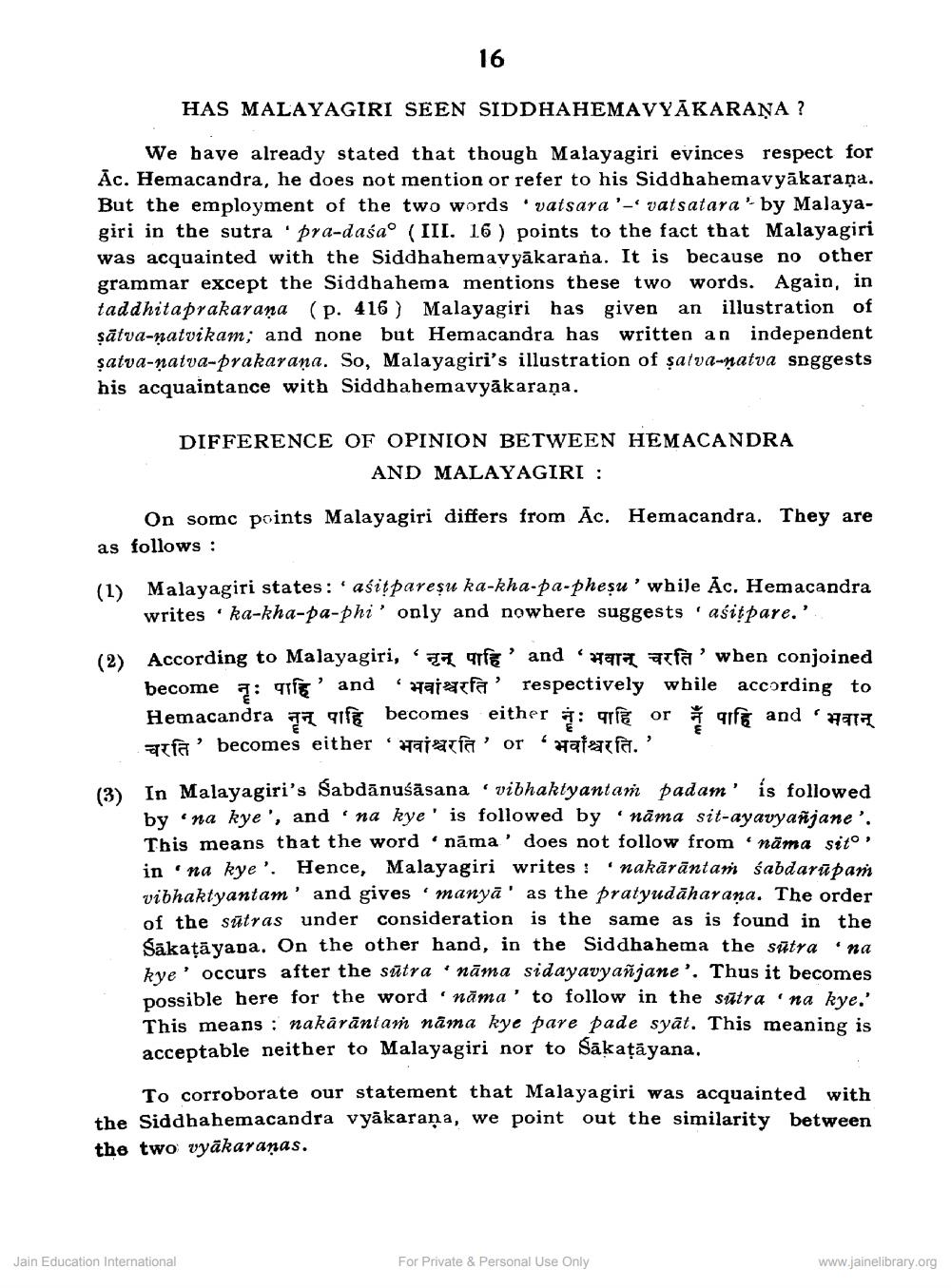________________
HAS MALAYAGIRI SEEN SIDDHAHEMAVYĀKARAŅA ?
We have already stated that though Malayagiri evinces respect for Ac. Hemacandra, he does not mention or refer to his Siddhahemavyākarana. But the employment of the two words vatsara'- vatsatara' by Malayagiri in the sutra pra-daśao (III. 16 ) points to the fact that Malayagiri was acquainted with the Siddhahemavyäkarana. It is because no other grammar except the Siddhahema mentions these two words. Again, in taddhitaprakarana (p. 416) Malayagiri has given an illustration of sātva-natvikam; and none but Hemacandra has written an independent şatva-natva-prakarana. So, Malayagiri's illustration of satva-natva soggests his acquaintance with Siddhahemavyākaraña.
DIFFERENCE OF OPINION BETWEEN HEMACANDRA
AND MALAYAGIRI :
On some points Malayagiri differs from Āc. Hemacandra. They are as follows:
(1) Malayagiri states: aśitpareșu ka-kha-pa-phesu' while Ac. Hemacandra
writes ka-kha-pa-phi’ only and nowhere suggests 'asit pare.'.
(2) According to Malayagiri, ' T afg' and 'art atfa' when conjoined
become नृ: पाहि' and 'भवांश्चरति' respectively while according to
Hemacandra नृन् पाहि becomes either n: पाहि or न पाहि and 'भवान् afa' becomes either Haieatfa' or 'waterfa.
3) In Malayagiri's Sabdānuśāsanavibhaktyantam padam' is followed
by na kye', and 'na kye' is followed by 'nāma sit-ayavyañjane'. This means that the word 'nāma' does not follow from 'nāma sito in na kye'. Hence, Malayagiri writes : 'nakārāntan sabdarūpam vibhaktyantam' and gives manyā' as the pratyudāharana. The order of the sütras under consideration is the same as is found in the Sakata yapa. On the other hand, in the Siddhahema the sätra na kye' occurs after the sūtra 'nāma sidayavyañjane'. Thus it becomes possible here for the word 'nāma' to follow in the sūtra 'na kye.' This means : nakarāntam nāma kye pare pade syāt. This meaning is acceptable neither to Malayagiri nor to Sākațāyana.
To corroborate our statement that Malayagiri was acquainted with the Siddhahemacandra vyākarana, we point out the similarity between the two vyākaranas.
Jain Education International
For Private & Personal Use Only
www.jainelibrary.org




